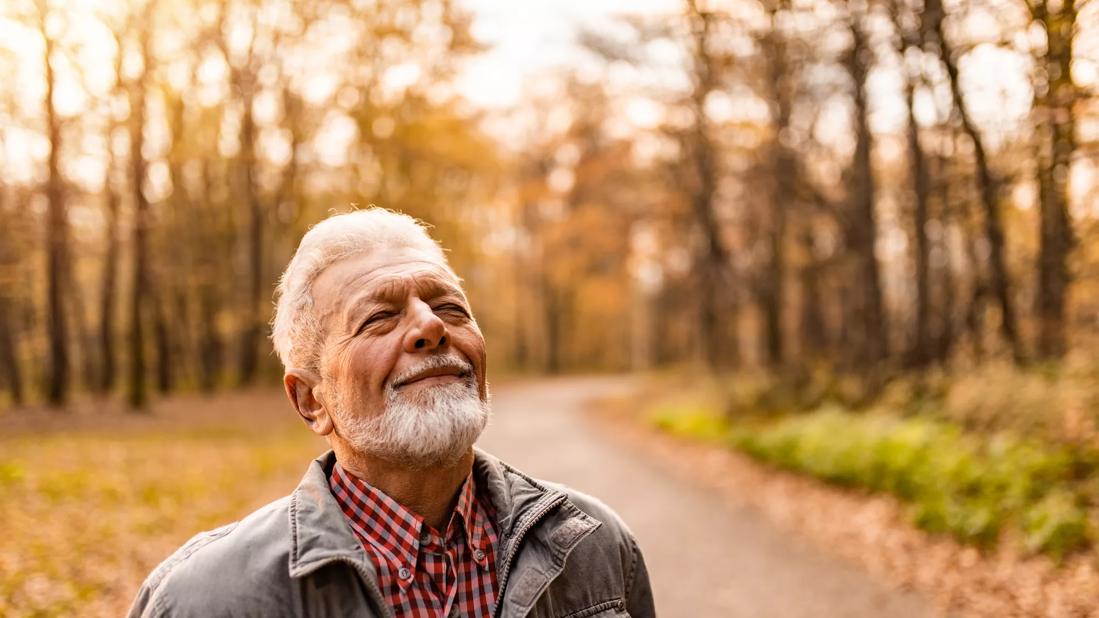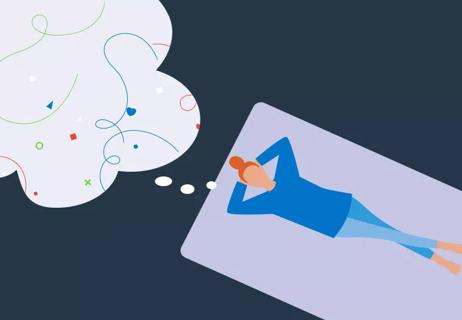While walking, be mindful of your body, your mind, your place in the world and all five of your senses as you pave a path forward, one step at a time

When was the last time you went on a walk? While you were walking, were you caught up in a conversation with someone, either on the phone or in person? Were your thoughts racing about all the other things you left unfinished at home? Or were you alone, content and mindful in the moment?
Advertisement
Cleveland Clinic is a non-profit academic medical center. Advertising on our site helps support our mission. We do not endorse non-Cleveland Clinic products or services. Policy
In this day and age, we’re all very busy and forever tuned in to the rest of the world and all its happenings. So, it can be a little hard to get a quiet moment to ourselves unless we set out to make the time and space for it.
Practicing mindfulness in general can boost your mental and physical health in a variety of ways. But walking meditation specifically allows you to be mindful in the moment while also getting the benefits of physical movement without the risk of over-exertion.
Behavioral health therapist Benjamin Perko, LPCC, discusses how walking meditation shares similarities and differences with other meditative practices. He also takes us through the steps of a mindful walking meditation practice you can do at home, at the office or anywhere in between.
Walking meditation is a mindful practice where you bring awareness to the active intentional movement of walking.
Culturally, this practice is rooted in the traditions of Buddhism, Taoism and yoga, and has been used for centuries in coordination with other mindful practices to boost awareness and improve one’s enlightenment.
“When we think of the word ‘meditation,’ we think of sitting, rest, relaxation and closing our eyes or trying to find a place of focus and relaxation and paying attention to the body in a different way,” explains Perko. “Walking meditation, however, is very active and you can practice walking meditation anywhere.”
Advertisement
The active component of walking meditation may be compelling, especially for beginners who are interested in meditating for the first time.
“People gravitate at times to the more active approach to meditation because sometimes, meditation can be very intimidating when we’re left with our thoughts and we’re not always able to control what thoughts come up,” recognizes Perko. “Walking builds a little bit of a bridge of comfort for individuals who might be worried about that vulnerability.”
People who practice walking meditation in the Theravada Buddhist tradition will typically walk a straight path of up to 40 feet before turning around and paving the same path over again, repeating this process for several minutes or hours at a time. During this process, they focus on the awareness of their movement and how they’re feeling in different parts of their body with each step.
Another variation is the Japanese walking meditation of kinhin, which is much slower and has participants walking clockwise in a circular fashion in one room holding a specific posture for 20 minutes or more during each session. These bouts of walking meditation typically take place between periods of sitting meditation.
These are just a couple of the most common variations of walking meditation. The key to any walking meditation, regardless of its nature, is to make sure you’re focusing on your self-awareness and that you’re carving out a space for your personal health and well-being.
“When we talk about meditation, yoga and mindfulness, all of this falls within the purview that you have to be willing to sit with yourself and really feel and observe what is going on instead of having these other distractions and other things that aren’t allowing us to be present all day long,” notes Perko.
On their own, walking and meditation have their own benefits for your mental and physical health.
Walking has been shown to:
Meditation can also reduce stress and anxiety, but it has other benefits, too, like:
When these two activities are combined into a single practice or done together in alternating sessions, studies have shown that participants experience mental and physical benefits.
Advertisement
A randomized controlled trial from 2018 showed a significant decrease in anxiety among young adults who participated in meditation by itself, or when they meditated before or after walking. Another randomized controlled study from 2019 showed significant changes in anxiety, depression, shortness of breath and quality of life when patients with chronic obstructive pulmonary disease participated in breathing-based walking and meditation over two months.
“When we engage in these types of interventions, I’m always quick to tell people that these aren’t a cure-all. But these are supportive ways to physically adjust and shift your body, and they’re practices you can do alongside other activities to improve your overall health and wellness,” clarifies Perko.
Although there are many types of walking meditations, beginners may want to start with a mindfulness meditation so they can familiarize themselves with the practice, discover how it feels and learn how to engage their five senses as they’re meditating.
You can do this meditation at home, out in nature or even in a public setting. Just know that your experience may vary widely depending on your surroundings.
“At home, a walking meditation will allow you to focus a lot more on the physical sensations of walking, like your foot touching down on the carpet or hardwood floor, your leg and foot lifting up, bending and then extending to touch back down on the ground in front of you,” explains Perko.
Advertisement
“In a busier, city-like environment or in a public setting, it will be a more sensory and environmental experience where you’re using all five of your senses as you’re walking to hear the cars drive by and smell whatever scents are in the air around you.”
If you’re unable to walk or have limited mobility, Perko suggests using the same techniques (below) while doing chair yoga.
“Chair yoga is movement-based, much like walking meditation,” he says. “A lot of it incorporates the use of your upper body, and you’re engaging in that physiological movement that helps keep you active while you’re being mindful in the present moment.”
Ready to clear your mind? Follow these steps for a mindfulness walking meditation:
Advertisement
“This is just a template for a mindfulness walking meditation,” he adds, “but there are several ways to do this. Part of the experience is finding out what works best for you and then catering those experiences to your individual needs and goals.”
Learn more about our editorial process.
Advertisement

Breathing, exercise, mindfulness and more can help you unwind and step away from your stress

From breath meditation to yoga nidra, all types of meditation aim to help you feel calmer, more relaxed and present

Different types of yoga poses, meditation and breathwork may help you feel more emotionally balanced

Sensory deprivation therapy can help relieve stress, improve sleep and decrease physical pain

You don’t need to have years of experience to reap the rewards of meditation — with benefits for your whole body, you only need a couple minutes to get started

Thunder, waterfalls and heavy rain — these low-frequency sounds might help cancel out disruptive noises and thoughts

Immersing yourself in nature can improve both your mental and physical health

This bedtime exercise can help you fall asleep faster (and stay asleep)

You can improve your athletic performance over time by breaking up your workout regimen into focused cycles

The little blue pill might help with physical arousal, but there are better treatments for low libido in women

Sleep issues and certain foods can lead to an early morning headache